Call 1300 849 118
Gallbladder Disease & Treatment
About the Gallbladder
The gallbladder is a hollow pear-shaped organ that lies just below the liver. Its primary function is to store bile, a thick yellow-green liquid produced in the liver. Bile aids in the digestion of fatty foods.
Stored bile drains out from the gallbladder into the common bile duct, which opens into the small intestine.
Gallbladder Disease
Gallbladder disease is an umbrella term for several conditions affecting the gallbladder. Inflammation of the gallbladder wall is responsible for a majority of the gallbladder diseases.
Diseases of the gallbladder include
- gallstones,
- gallbladder polyps, and
- gallbladder cancer.
Gallbladder diseases can impact your health significantly by causing severe abdominal pain and decreased quality of life.
Gallstones
A gallstone, is a lump of hard material formed inside the gallbladder. Gallstones range in size from a grain of sand to 3-4 cms.
Types and Causes of Gallstones
- Cholesterol stones
- Pigment stones
- Mixed stones
Cholesterol stones
Gallstones are formed as a result of precipitation of cholesterol and bile salts from the bile. They are usually yellow-green and are made primarily of hardened cholesterol. They account for about 80 percent of gallstones.
Scientists believe cholesterol stones form when bile contains
- too much cholesterol,
- too much bilirubin,
- not enough bile salts, or possibly
- when the gallbladder does not empty as it should for some other reason.
Pigment stones
These types of gallstones are small, dark stones made of bilirubin. The exact cause is not known. They tend to develop in people who have
- cirrhosis,
- biliary tract infections, and
- hereditary blood disorders such as sickle cell anaemia in which too much bilirubin is formed.
Risk Factors Associated with Gallstones
As gallstones are related to excess excretion of cholesterol, other risk factors or causes associated with gallstones are:
- Obesity - Especially in women.
- Oestrogen - Excess oestrogen from pregnancy, hormone replacement therapy, or birth control pills. Women between 20 and 60 years of age are twice as likely to suffer from gallstones than men.
- Cholesterol-lowering drugs.
- Diabetes - People with diabetes generally have high levels of fatty acids called triglycerides.
- Rapid weight loss - As the body metabolizes fat during rapid weight loss, it causes the liver to secrete extra cholesterol into bile.
Signs of Gallstones
Symptoms may vary and often follow fatty meals, and they may occur during the night. Typical symptoms include:
- abdominal bloating and severe abdominal pain
- recurring intolerance of fatty foods
- steady pain in the right side of the upper abdomen
- pain in the back between the shoulder blades
- pain under the right shoulder
- nausea or vomiting
- Indigestion and belching
The pain in the upper abdomen usually increases and lasts from 30 minutes to several hours.
Many people with gallstones have no symptoms. These patients are said to be asymptomatic, and these stones are called "silent stones."
Gallstone symptoms can be similar to those of heart attack, appendicitis, ulcers, irritable bowel syndrome, hiatal hernia, pancreatitis, and hepatitis.
An accurate diagnosis is important.
Diagnosis of Gallstones
To confirm the existence and nature of gallstones various tests may be required. These include:
- Blood Tests - may be used to see signs of infection, obstruction, pancreatitis, or jaundice
- Ultrasound - the most sensitive and specific test for gallstones.
- Computed tomography (CT) - scan to show the gallstones or complications that can result
- Endoscopic retrograde cholangiopancreatography (ERCP) - This involves a patient swallowing an endoscope (a long, flexible, lighted tube connected to a computer and TV monitor). your doctor guides the endoscope through the stomach and into the small intestine. Your doctor then injects a special dye that temporarily stains the ducts in the biliary system. Endoscopic Retrograde Cholangiopancreatography is used to locate and remove stones in the ducts
Gallbladder Disease
Usually gallstones do not cause any problems, but if gallstones block the gall bladder outlet, trapping the bile in the gallbladder, infection in the biliary tract can result.
If not treated both bile duct infections or pancreatitis can be a life-threatening.
With prompt diagnosis and treatment, the outcome is usually very good.
Types of Gallbladder Disease
Cholecystitis
Where gallstones obstruct bile causing inflammation of the walls of the gallbladder. This condition can lead to swelling, pain and sometimes infection. Gallbladder infection is called cholecystitis
Calculous Cholecystitis
Where acute cholecystitis occurs without the presence of gallstones it is referred to as a calculous cholecystitis. This gallstone condition is a more serious and tends to occur with gallbladder injury caused as a result of:
- surgery,
- prolonged fasting,
- critical illnesses or
- when a problem with the immune system occurs.
Treatments of Gallbladder Disease
Treatments depend on the type of gallbladder disease. The initial treatment of cholecystitis may include antibiotics however in the presence of gallstones, surgery may be the treatment of first choice.
Where patients experience multiple gallbladder episodes, a surgery called cholecystectomy is most often recommended. A cholecystectomy involves the surgical removal of the gallbladder.
Fortunately, the gallbladder is an organ you can live without. Gallbladder removal most often results in complete recovery and does not require a specific diet after the surgery.
Indications for Gallbladder Removal
Gallbladder removal is indicated when:
- an attack hasn't settled after 12 hours
- there are complications such as jaundice, pancreatitis
- a patient suffers recurrent pain or vomiting
- a patient suffers cholangitis
Surgical Treatments for Gallbladder Disease
Of all the surgical procedures for which laparoscopy is an option, cholecystectomy - gallbladder removal - is the most widely recognised and accepted.
The main benefit of this procedure is that it is a minimally invasive procedure. Minimally invasive surgery means "Lesser Pain" and "Faster Recovery".
There is no incision pain as occurs with standard abdominal surgery. So the recovery time is much quicker. Also, there is no scar on the abdomen.
Further, keyhole gallbladder surgery has developed quickly in recent years. Gallbladder surgery is now the standard method for removing the gallbladder when indicated.
There are new techniques for surgically removing the gallbladder such as:
- single incision surgery,
- needlescopic surgery and
- natural orifice translumenal surgery
Your doctor is experienced in advanced minimally invasive laparoscopic techniques and also performs advanced endoscopic surgery, such as ERCP.
Laparoscopic Cholecystectomy
A Laparoscopic Cholecystectomy procedure involves
- making one or more incisions in the abdomen
- your doctor inserts surgical instruments and a miniature video camera into the abdomen
- the camera sends a magnified image from inside the body to a video monitor.
- as your doctor views the organs and tissue he uses the instruments to carefully separate the gallbladder from the liver, ducts, and other structures.
Where the gallstones are positioned in the bile ducts, your doctor may use Endoscopic Retrograde CholangioPancreatography (ERCP) to locate and remove them before or during the gallbladder surgery.
Other Related Gallbladder Disorders
Other complications associated with gallstones and the gallbladder may include
- Biliary colic
- Cirrhosis - Cirrhosis is the result of chronic liver disease that causes scarring of the liver (fibrosis - nodular regeneration) and liver dysfunction
- Cholangitis- Cholangitis is an infection of the common bile duct, which carries bile (which helps in digestion) from the liver to the gallbladder and then to the intestines
Untreated Gallbladder Disease
If left untreated the gallbladder can become severely infected, causing some of the tissue to die and decay resulting in septicaemia (blood poisoning), a life threatening condition.
In some cases the gallbladder may even burst or an abnormal channel may develop between the gallbladder and gut due to the inflammation.
Contra Indications for Laparoscopic Surgery
There are very few instances when laparoscopic surgery is not preferable to conventional surgery for cholecystectomy.
The only real contraindication is if the anaesthetic risk is too high.
Other, lesser contraindications such as early pregnancy - need not pose a problem. Infact, keyhole surgery benefits are as follows:
- Obesity - there are fewer postoperative complications with laparoscopic surgery
- Previous surgery - adhesions can be dealt with successfully
- Common bile duct stones can be removed by laparoscopy, or by ERCP
- Severe cholecystitis is best dealt with acutely - one operation and recovery period - and can be done safely with laparoscopic technique
Risks With Cholecystectomy
Like any abdominal surgery, Laparoscopic Cholecystectomy carries some risks. Even though infrequent they are no more than most other general surgery procedures.
Complications are rare and may include:
- Bleeding & infection may occur but is rare with experienced surgeons
- In a few cases, the gallbladder cannot be safely removed by laparoscopy. Standard open abdominal surgery is then immediately performed
- Nausea and vomiting may occur after the surgery
- Injury to the bile ducts, blood vessels, or intestine can occur, requiring corrective surgery
Recovery from Gallbladder Surgery
Due to the less invasive laparoscopic technique, recovery is swift and usually only an overnight stay in hospital is required.
The incisions heal quickly with less pain or scarring than traditional methods of surgery. You can expect to be back to work within two weeks.
CONSULTING LOCATIONS
- St George Private Hospital 1 South St, Kogarah, 2217, New South Wales, Australia
- Figtree Private Hospital 1 Suttor Pl, Figtree, 2525, NSW, Australia
- Sydney South West Private Hospital 24 Bigge St, Liverpool, NSW, Australia
- Coffs Harbour 53 Moonee Street, Coffs Harbour New South Wales 2450, Australia
- Windsor 267 George Street, Windsor New South Wales 2756, Australia
HOSPITAL LOCATIONS
About Us
Our focus is on helping our patients lose weight and stay a healthy weight thereafter. Read more about us...
Clinics at
Dr Jason Maani is not a financial service provider. The information provided regarding payment options, including private health funds, superannuation access, and other financial assistance services, is for information purposes only. These services are independent of Dr Jason Maani, and patients are responsible for directly contacting the relevant providers to understand the terms, eligibility, and process for utilising these options for their procedure costs. Dr Jason Maani does not provide financial or insurance advice and recommends patients seek independent financial or professional advice regarding payment methods.







